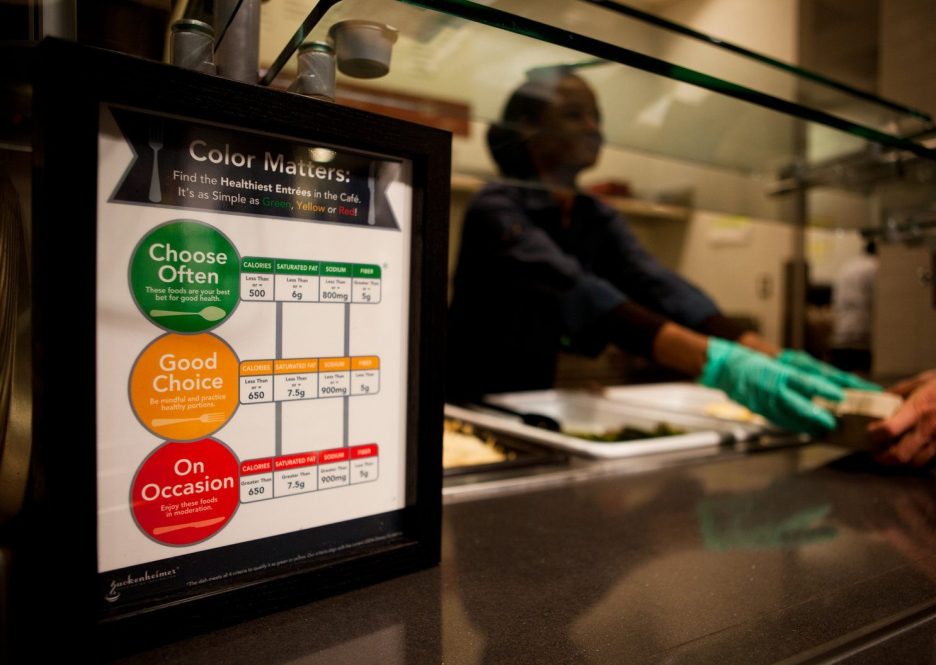Feeding America, the nation’s largest hunger-relief organization, released the Nutrition in Food Banking Toolkit on Tuesday – a resource to support food banks and food pantry programs as they work to address food insecurity and the overlapping challenges posed by structural inequities.
The toolkit was developed by Feeding America’s Nutritious Food Revisioning Task Force, made up of more than a dozen food banks and national organization staff, and partnering organizations, which includes the UConn Rudd Center for Food Policy and Obesity.
Marlene Schwartz, the director of the Rudd Center and a professor in the Department of Human Development and Family Studies, was part of the task force. UConn Today interviewed her about the importance of the work.
Why was it important to develop this toolkit for food banks and pantries?
A lot of research has come out in the last ten years showing that the people who use the charitable food system are at significantly higher risk for diet-related chronic diseases…things like type 2 diabetes, heart disease and hypertension. Those are all illnesses that are very much influenced by what you eat.
Food banks receive donations and distribute it to their communities through food pantries, which are often at churches or community centers, as well as places that serve an actual hot meal. Historically, the metric used to keep track of these programs was how many thousands of pounds of food that were actually distributed.
But as it became clear the people receiving the food were suffering from these diet-related illnesses, we started saying, “Wait a minute, what exactly are we handing out?” We are handing out 10,000 pounds of food, but what is it?
About two years ago, Healthy Eating Research, which is a program of the Robert Wood Johnson Foundation funded me and a colleague of mine at the University of California San Francisco, Dr. Hilary Seligman, to co-chair a national panel to develop a ranking system that will work for the charitable food network. We found in our previous work that a good portion of food banks were doing some sort of tracking, but they were using tons of different systems.
The basic idea is to provide, in very concrete terms, what a food bank needs to do to start ranking food nutritionally. We have been doing a series of studies that shows when people have that information, it matters. It changes people’s behavior. We use a green-yellow-red ranking system, and we found that when pantries use it, the nutritional quality of what they ordered improves.
As this eventually infiltrates the entire system from top to bottom, it will affect what donors give. It will affect what pantries take, and ultimately will affect what clients take, which should really improve public health.
What do you recommend that people donate to their local food banks and drives?
One of the stereotypes about people who go to food pantries is that they don’t want to cook themselves, and we have found that is absolutely not the case. What is hard for clients to get are things like cooking oils, spices, and baking ingredients. These things are very expensive. I would like to see whole drives center around these types of things.
How does hunger lead to other problems in people’s lives?
I once heard the quote, “A man with bread has many problems, a man without bread has one.” If you don’t have enough to eat, hardly anything else really matters. It’s a basic need. Students are not going to succeed if they are hungry. How are you supposed to pay attention to a teacher or do homework, if all you can think about is how hungry you are? Hunger hurts academic achievement tremendously.
Families struggling with food insecurity are force to choose between things like rent, heat, and medicine. There is a wide range of how much you can pay for food. So, in order to meet basic needs, people turn to less healthy, cheaper foods, like soda and chips. It’s a lot of calories, but no nutrition.
You get into this bad cycle. The less healthy you are, the less capable you are of working, and the more expensive your health costs are. Food insecurity causes a cascade of problems that makes the original problem worse. You are still going to have a lot of issues to deal with if you are low income, but if we can solve the food problem, then the focus can be on other problems.



